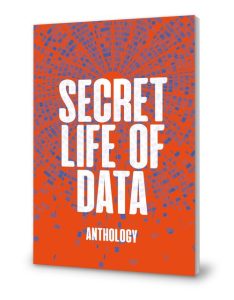 An Interview with JGI Intern, Debby Olowu
An Interview with JGI Intern, Debby Olowu
Hi, my name is Debby. Currently, I am a 3rd-year Psychology with Innovation student at the University of Bristol. Earlier this year, for one of my Innovation modules, I was required to complete and write about an internship I took part in. I was privileged that the Jean Golding Institute (JGI) were able to support me in completing an internship for which I am incredibly grateful. Here, I will explain what I learnt from this internship and how it added to my learning.
What did you enjoy about the internship?
I enjoyed learning how the university operates behind the scenes. I particularly enjoyed their biweekly meetings where everyone goes around and introduces themselves and what they have been up to over the past week. This made me feel extremely comfortable because I could get insight into what everyone had been up to, and this made me feel incredibly involved. I also felt less pressure when giving my presentation because I had already met everyone the meeting before. I also enjoyed learning and tackling new projects which were investigating the National AI Strategy and Data Science for primary school students.
What did you learn and what skills do you think you developed?
I learned much from my internship here at the JGI. The biggest thing I learned from this internship was the national AI strategy. This is the government’s 10-year plan to become an AI powerhouse and improve AI across the country. The government has three main aims: the first is to provide the best of the best to work with AI. The second is to implement AI in different sectors such as the NHS. Finally, the last aim is to show people that AI is trustworthy. I did not know much about AI before researching this strategy, but now, I have learned so much about AI. Another thing I learned was about how the primary school and secondary school curriculum integrates data science and artificial intelligence. It was interesting to see the impact data science has on both curricula, but its impact is rarely acknowledged explicitly to students. Data science takes place in so many subjects: ones that most people would be aware of are sciences and maths. However, I was surprised to know that data science can also be incorporated into subjects such as geography and history. Yet, I believe the government should work harder to incorporate data science in the curriculum and to assess it better and originally this was done in coursework but due to significant levels of plagiarism, they had to stop. However, from my research, I feel that data science should be a separate subject to be studied so that students can understand its impact better and be prepared for when it is incorporated into their studies at university.
How has the experience added to your learning with respect to your degree programme?
As mentioned before, for one of my modules in my degree, I had to complete an independent internship module. The JGI not only allowed me to do this but to also improve the skills I use in assessments. This experience enabled me to improve my research and presentation skills. These are essential to my degree as to do well I must be able to research well, and this should strive to be in a way that is engaging yet informative.
Would you recommend an internship with the JGI and why?
I would recommend an internship with JGI especially if you are interested in a career in data science. Even though I am interested in a career in Psychology, conducting projects that require intense research and evaluating whether approaches were beneficial is a necessary aspect of any career, especially Psychology. This shows how doing an internship with the JGI will benefit and aid you, even if you are still deciding on a career path.
I am grateful for the opportunity to work at the JGI and especially to Emma Kuwertz for supporting me throughout my placement!



